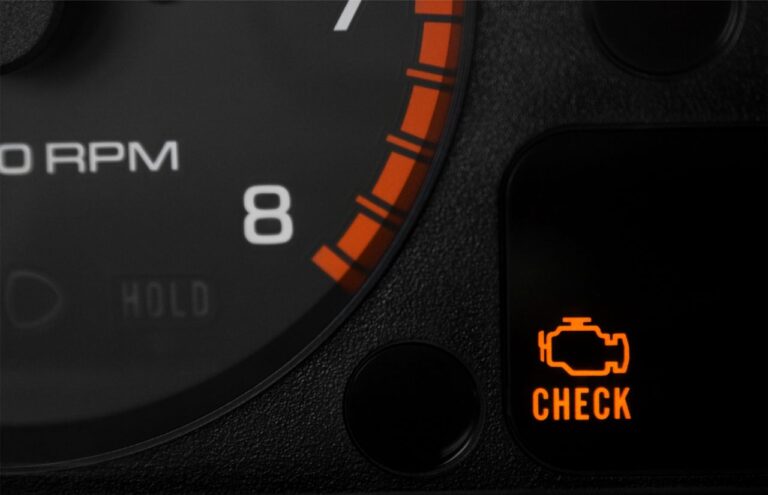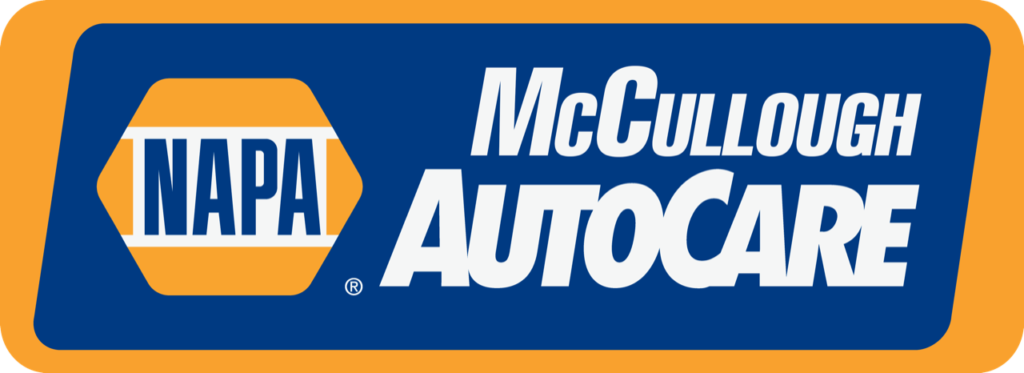
Table of Contents
Is your check engine light flashing and you’re wondering what could be the issue? There are many reasons why your check engine light may be on. In this article, we’ll discuss the reasons a check engine light may turn on in a car, the difference between a flashing check engine light and one that stays illuminated, and how McCullough NAPA Auto Care can perform an engine diagnostic to pinpoint the issue and make any necessary engine repairs.
Reasons Your Check Engine Light May Turn On
There are a number of reasons your check engine light might turn on. Let’s dive into a few common scenarios:
- Loose or damaged gas cap: This might seem like a minor issue, but a loose or damaged gas cap can cause fuel to evaporate, leading to poor fuel efficiency and increased emissions.
- Failing oxygen sensor: An oxygen sensor measures the amount of unburned oxygen in your car’s exhaust system. A faulty sensor can cause poor fuel efficiency and increased emissions.
- Bad spark plugs: Spark plugs ignite the air-fuel mixture in your engine’s cylinders. If they’re failing, your engine may misfire or have trouble starting, and your fuel efficiency will suffer.
- Issues with Your Catalytic Convertor. The catalytic converter changes carbon monoxide into carbon dioxide. When your catalytic converter isn’t working properly, you’ll experience a loss in fuel economy and performance. There are many possible causes for a failing catalytic converter, all of which can cause the check engine light to turn on.
Flashing Check Engine Light vs. Check Engine Light That Stays Illuminated
There’s a significant difference between a flashing check engine light and one that stays illuminated:
- Flashing check engine light: A flashing light indicates a severe issue, such as engine misfires, which could damage the catalytic converter. It’s crucial to address this problem immediately to avoid expensive repairs.
- Check engine light that stays illuminated: A steady light indicates a less urgent issue, but you should still have your car checked by a professional to identify and fix the problem.
Schedule an Engine Diagnostic with McCullough NAPA
If your check engine light is flashing or illuminated, don’t ignore it. McCullough NAPA Auto Care can perform a comprehensive engine diagnostic to identify the issue and provide the necessary engine repair to get you back on the road safely.
Here’s what you can expect when you bring your car in for car troubleshooting:
- Our technicians will connect a diagnostic tool to your car’s onboard computer, which will provide a code indicating the issue.
- We’ll then use this information to determine the cause of the problem and provide an accurate estimate for any required repairs.
- Once we have your approval, we’ll proceed with the necessary repairs to fix the issue and ensure your car is running smoothly.
Don’t let a flashing check engine light stress you out. Trust the experts at McCullough NAPA Auto Care to provide top-notch engine diagnostics and engine repair services. Schedule an appointment today!
FAQ About Check Engine Light Diagnostics
To diagnose a check engine light, a technician connects a diagnostic tool to your car’s onboard computer, which provides a code indicating the issue. This information helps determine the cause of the problem and estimate repair costs.
The average cost for a check engine light diagnostic varies, but it typically ranges between $50 and $120. This fee may be waived if you choose to have the necessary repairs done at the same facility.
There are many reasons for a check engine light, but one of the most common is a loose or damaged gas cap, causing fuel to evaporate and leading to poor fuel efficiency and increased emissions.
While a code reader is the most accurate way to diagnose a check engine light, you can try checking for any visible issues, such as a loose gas cap or damaged wiring. However, it’s always best to consult a professional for an accurate diagnosis.
A solid check engine light indicates a less urgent issue compared to a flashing light. However, you should still have your car checked by a professional to identify and fix the problem as soon as possible.
The first thing to check when the check engine light comes on is the gas cap. Ensure it’s tightened properly and not damaged. If the light persists, consult a professional for a diagnostic.
While it’s generally safe to drive with a solid check engine light for a short period, it’s crucial to have the issue diagnosed and fixed as soon as possible. A flashing check engine light, however, indicates a severe problem, and you should avoid driving until the issue is resolved.

